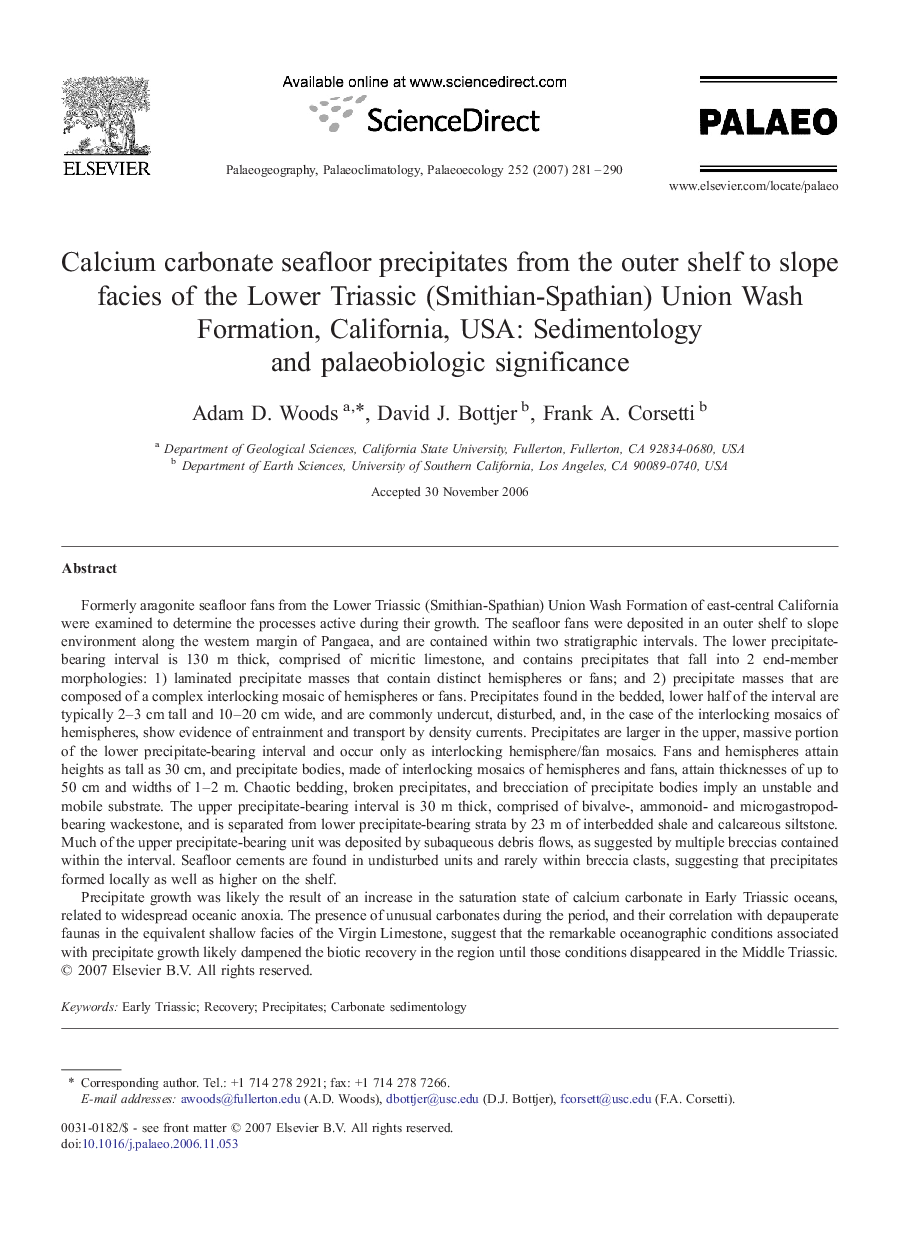| Article ID | Journal | Published Year | Pages | File Type |
|---|---|---|---|---|
| 4468829 | Palaeogeography, Palaeoclimatology, Palaeoecology | 2007 | 10 Pages |
Formerly aragonite seafloor fans from the Lower Triassic (Smithian-Spathian) Union Wash Formation of east-central California were examined to determine the processes active during their growth. The seafloor fans were deposited in an outer shelf to slope environment along the western margin of Pangaea, and are contained within two stratigraphic intervals. The lower precipitate-bearing interval is 130 m thick, comprised of micritic limestone, and contains precipitates that fall into 2 end-member morphologies: 1) laminated precipitate masses that contain distinct hemispheres or fans; and 2) precipitate masses that are composed of a complex interlocking mosaic of hemispheres or fans. Precipitates found in the bedded, lower half of the interval are typically 2–3 cm tall and 10–20 cm wide, and are commonly undercut, disturbed, and, in the case of the interlocking mosaics of hemispheres, show evidence of entrainment and transport by density currents. Precipitates are larger in the upper, massive portion of the lower precipitate-bearing interval and occur only as interlocking hemisphere/fan mosaics. Fans and hemispheres attain heights as tall as 30 cm, and precipitate bodies, made of interlocking mosaics of hemispheres and fans, attain thicknesses of up to 50 cm and widths of 1–2 m. Chaotic bedding, broken precipitates, and brecciation of precipitate bodies imply an unstable and mobile substrate. The upper precipitate-bearing interval is 30 m thick, comprised of bivalve-, ammonoid- and microgastropod-bearing wackestone, and is separated from lower precipitate-bearing strata by 23 m of interbedded shale and calcareous siltstone. Much of the upper precipitate-bearing unit was deposited by subaqueous debris flows, as suggested by multiple breccias contained within the interval. Seafloor cements are found in undisturbed units and rarely within breccia clasts, suggesting that precipitates formed locally as well as higher on the shelf.Precipitate growth was likely the result of an increase in the saturation state of calcium carbonate in Early Triassic oceans, related to widespread oceanic anoxia. The presence of unusual carbonates during the period, and their correlation with depauperate faunas in the equivalent shallow facies of the Virgin Limestone, suggest that the remarkable oceanographic conditions associated with precipitate growth likely dampened the biotic recovery in the region until those conditions disappeared in the Middle Triassic.
